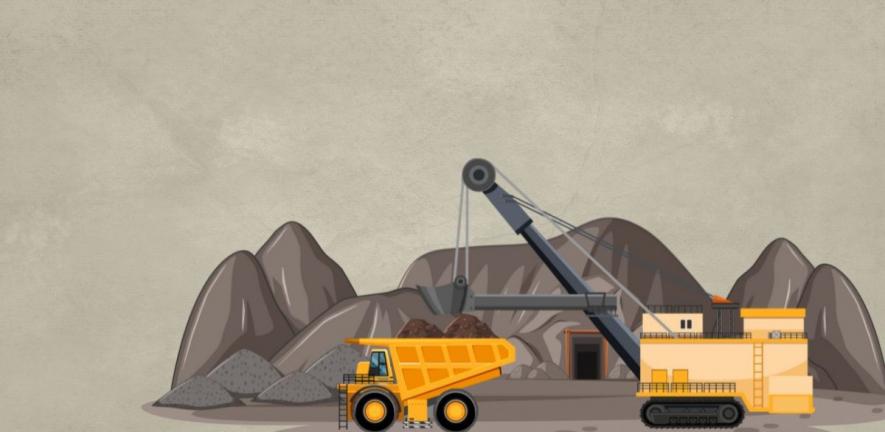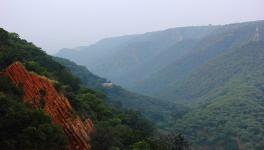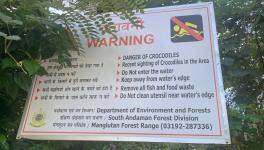Citizens’ Fight to Restore Goa’s Ecology: Revitalising Agriculture in Mining-Affected Areas

Representational Image.
The tenacity and initiative exhibited by the residents of Pissurlem and Shirgao serve as inspirational examples for other communities affected by mining. Villagers can reclaim their lands, restore their environment, and regain self-sufficiency, if they stand together and commit to change.
—
How has litigation over mining operations in Goa played out at the Supreme Court?
The pervasive and damaging mining operations in Goa over the last two decades have gained notoriety for wreaking havoc on the countryside, most significantly on the rice fields and water resources of local villagers. This has rendered those residing in mining-affected zones wholly reliant on external provisions for fundamental necessities like food and water. The relentless assault on the environment by the mining industry has left most waterbodies, including streams, rivers, wells and creeks, devoid of water within just a few years.
The Supreme Court has used the term “rapacious mining” to characterise the brutal mining operations conducted by former Goan mining families and corporations. The court halted all mining activities in Goa in October 2012 after being appalled by the reports of the Justice M.B. Shah Commission of Inquiry for Illegal Mining of Iron Ore and Manganese detailing the state of mining in Goa. The court maintained its decision, despite numerous appeals from the mining industry to modify the order for various reasons, including potential livelihood impacts and state revenue loss.
Once the Supreme Court stopped mining in October 2012, the next two monsoon seasons provided much-needed relief. However, the fields were still waterlogged with stagnant water and overrun by weeds, making agriculture a near impossibility.
The agricultural economy, once the lifeline of rural Goa, is now in shambles and desperately requires revitalisation. However, the question of who will rectify the damage inflicted by previous leaseholders remains unanswered.
When mining was briefly resumed in 2015, courtesy of the Mines and Minerals (Development and Regulation) Act, 1957 being subsequently revised to allow for lease extension, followed by the Goa government’s renewal of 88 mining leases, villagers braced themselves for another round of environmental degradation. Fortunately, these renewals were declared illegal by the Supreme Court, bringing mining activities to another halt.
How has mining affected agriculture in Goa?
As discussions regarding the resumption of mining are underway, the bleak state of fields and orchards, and the scarcity of drinking water in mining-affected villages are alarming. The once diversified water sources that supported a second rice crop or winter vegetables, and reduced dependence on any single source, are now diminished.
Agricultural economy, once the lifeline of rural Goa, is now in shambles and desperately requires revitalisation. The question of who will rectify the damage inflicted by previous leaseholders remains unanswered. New leaseholders are unlikely to take on the task of clean-up. They will focus on commencing mining operations as soon as possible, even if that means doing so amidst fields crusted with mining silt and wells devoid of fresh water.
The state government’s role in the restoration process is also unclear, considering its past negligence during the destructive mining operations. Instead, the government only assessed fields for crop loss and required mining companies to compensate affected farmers. With the leases now withdrawn, the compensation too has ceased, even though there is crop loss year after year ever since mining was halted by the Supreme Court. Does this mean that villagers must accept forever the loss of their fertile lands and their self-sufficiency in terms of water needs?
The COVID pandemic has demonstrated the importance of self-reliance, with many agricultural initiatives starting on small plots during lockdowns. These initiatives have grown, and some educated youth have joined farmers’ clubs, becoming full-time farmers. However, the challenge remains: how to clear agricultural fields of accumulated mining waste before farming can resume?
What recent victories have been secured in this struggle by villagers in Goa?
Pissurlem
A recent decision by the Director of Mines and Geology (DMG) brings a glimmer of hope for villagers living in the mining belt. The decision followed a public interest litigation filed by a resident of Pissurlem village, seeking to restore agricultural fields filled with mining silt. Applying the ‘polluter pays principle’, the DMG, on March 31, directed three mining companies— M/s R.S. Shetye, M/s Cosme Costa and M/s Sesa Resources— to contribute equally to desiltation of a paddy field, which a joint government inspection found to be filled with mining silt. The mamlatdar has further reported that the natural lake also needs to be desilted, and estimates for this task are being worked out.
Residents of Shirgao village wrote a letter petition to the Bombay High Court, detailing the damages caused by mining activities in their village.
Polluter pays principle holds polluters accountable for the environmental damage caused, and requires them to compensate victims and restore the environment. It has already been applied in the past in cases where mining companies were directed to pay compensation to farmers and supply water to villagers when their wells and springs dried up.
Cavrem
Similar relief was sought by the villagers of Cavrem in South Goa in 2016. The village was affected by iron-ore mining activities that had led to severe water scarcity and land degradation. The villagers approached the Goa State Pollution Control Board to file a complaint against the mining companies, alleging that their activities had led to the destruction of the village’s water bodies and agricultural lands.
This initiated a long-drawn legal battle, which resulted in the mining companies being ordered by the court to compensate the villagers for the damage caused and to take steps towards the restoration of the affected areas.
Shirgao
As far back as 2008, the residents of Shirgao village sought similar relief due to mining devastation. Their lands were surrounded by deep mining pits from three mining companies— M/s Bandekar, M/s Chowgule and M/s Sesa Goa (later Vedanta)— causing immense destruction to their community. They wrote a letter petition to the Bombay High Court, detailing the damage caused by mining activities in their village— that all 70 wells in the village had dried up, and their fields were covered with mining silt, leading to the growth of tall, obstructive weeds, due to which they could no longer cultivate the rich crops they once did. Fruit trees were bare, coconut trees had lost their fronds and the dust pollution was unbearable as trucks raced down the village lanes every few seconds, making it simply impossible to live in the village.
Yet they had stayed on because their village was the home of the Goddess Lairai, to whom a temple had been dedicated in the heart of the village. Every year, in May, lakhs of devotees would visit the village for this week-long festival in her honour— during which time the doors of the village were open to all the dhonds (pilgrims) and other visitors who had traversed long distances to worship the goddess. Could the high court help in any way?
Moved by this simple letter and the plight of the villagers, the high court not only directed that all mining activity be stopped during the five days of the festival, but also appointed the National Environmental Engineering Research Institute (NEERI) to report on whether the depletion of water resources in the village and the degradation of the agriculture fields was a result of mining activity, and if so, what remedial action needed to be taken. The NEERI’s report confirmed these allegations and proposed a series of restorative measures, amounting to ₹500 lakh for water recharge, and around ₹150 lakh for desilting and regeneration of agricultural land.
The District Mineral Foundation estimated a cost of ₹4 crore to restore the 80 hectares of paddy fields in the village. The Advocate General of Goa made the state government’s stance clear: the restoration charges should be borne by the mining companies under the polluter pays principle. In December 2021, the high court directed the government to commence restoration work, with half the costs covered by the District Mineral Foundation funds and the three mining companies contributing ₹65 lakh each.
Fruit trees were bare, coconut trees had lost their fronds and the dust pollution was unbearable as trucks raced down the village lanes every few seconds, making it simply impossible to live in the village.
The restoration of the Shirgao fields began on January 30, 2021, with a planned completion timeline of one year. Although various obstacles, including the COVID-induced lockdown, delayed the progress, by March 2022, the Kharat Khazan fields had been restored.
In June last year, the villagers planted the Kharat fields anew, for the first time in nearly two decades. The Sawat Khazan fields were completed in January this year, following which the Directorate of Land Survey re-established the boundary stones indicating each farmer’s land holdings. In addition, the contractor agency had also completed the desiltation of the entire 2.2 sq. km of the pond and installed a new sluice gate to regulate the flow of tidal water.
When I visited the village for the Lairai festival last time, the villagers joyfully told me that they planned to cultivate all their fields this monsoon, and hoped that they would once again relive their former glory of a bountiful harvest.
The tenacity and initiative exhibited by the residents of Pissurlem and Shirgao serve as inspirational examples for other communities affected by mining. These cases underscore the potential for villagers to reclaim their lands, restore their environment, and regain self-sufficiency, if they stand together and commit to change.
Norma Alvares is an Indian lawyer, social worker and environmental activist.
Get the latest reports & analysis with people's perspective on Protests, movements & deep analytical videos, discussions of the current affairs in your Telegram app. Subscribe to NewsClick's Telegram channel & get Real-Time updates on stories, as they get published on our website.
























